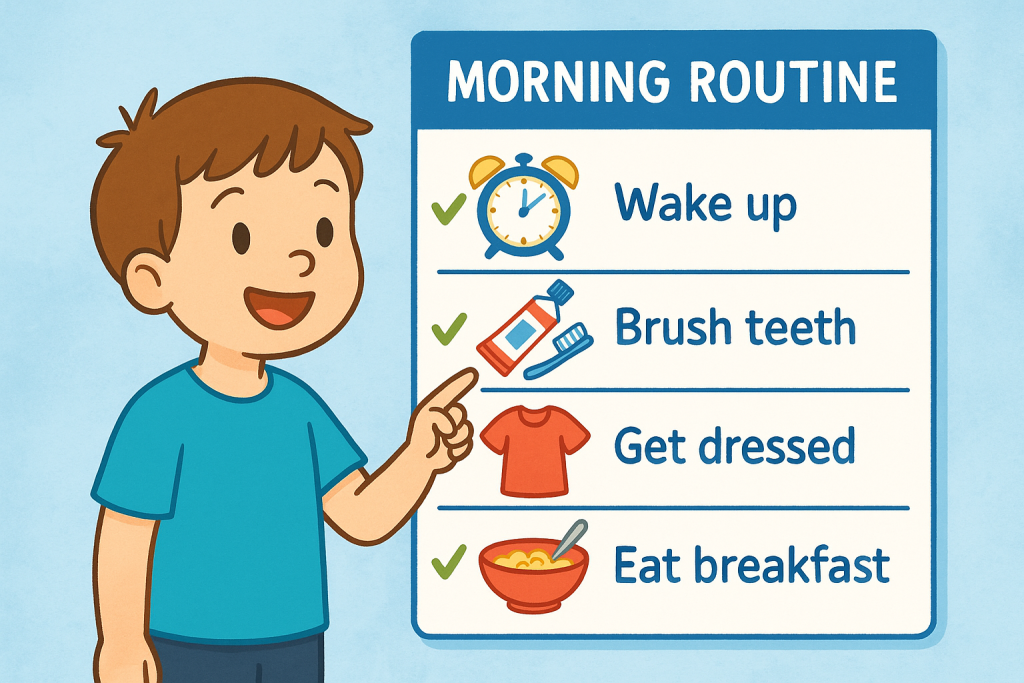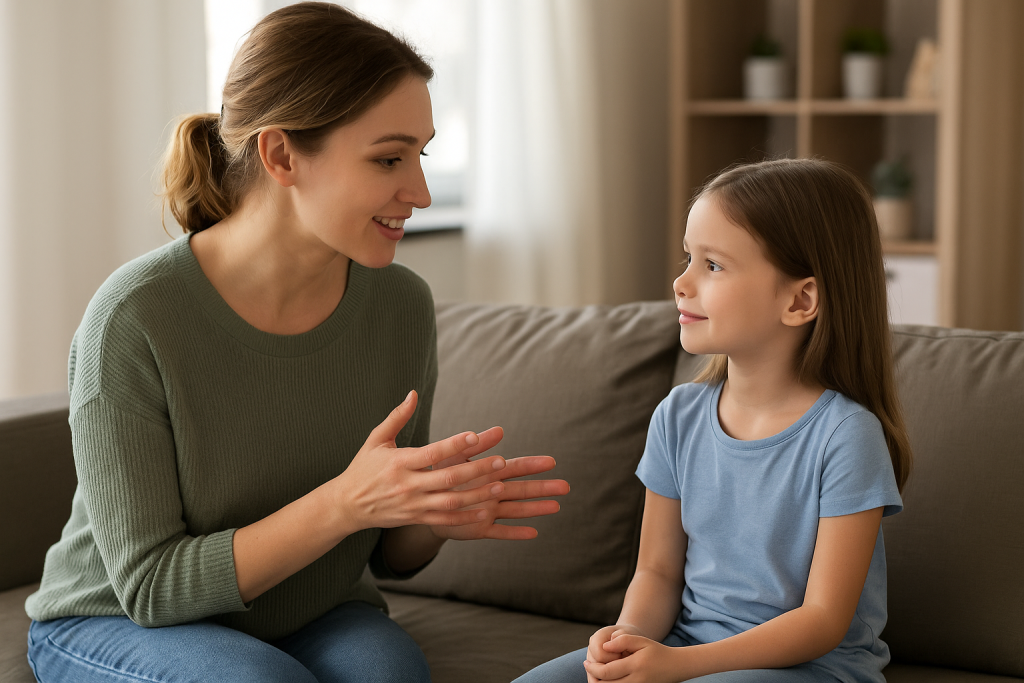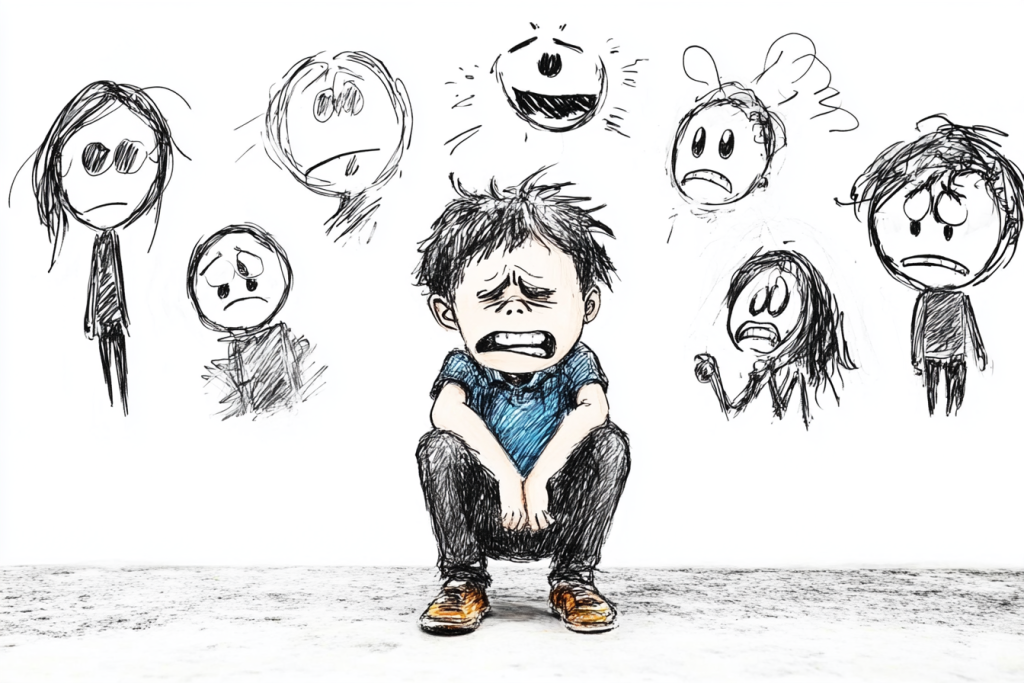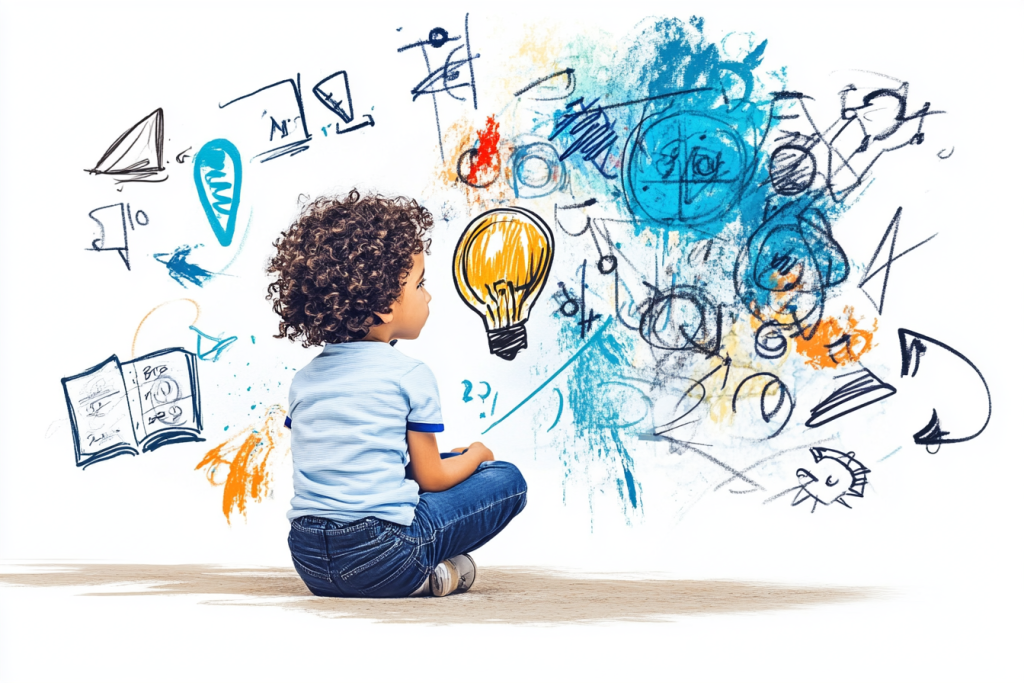Calm and happy parenting begins with emotional awareness, intentional routines, and a strong parent and child connection. Raising a joyful, well-adjusted child starts not with perfection but with presence. Parents who cultivate calm foster confidence, cooperation, and emotional intelligence in their children.
The Power of Emotional Regulation
Mastering Your Own Emotions First
Children mirror adult behavior. A calm parent models emotional control and teaches kids how to navigate frustration, anxiety, or anger with self-awareness and healthy coping strategies.
Responding Instead of Reacting
Pause before responding to tantrums or defiance. Responding with patience de-escalates tension and builds mutual respect. Calm parenting doesn’t mean permissiveness—it means measured, intentional action.
Creating Predictable Routines
Daily Structure Builds Security
Children thrive on predictability. Morning, mealtime, and bedtime routines help reduce power struggles and offer emotional grounding. Clear transitions throughout the day build trust and lower anxiety.
Visual Schedules for Younger Kids
Use visual charts to guide daily tasks like getting dressed or brushing teeth. Empower children to take responsibility for their time and habits with minimal prompting.

Communication That Encourages Connection
Use Calm and Clear Language
Simple, calm instructions are more effective than yelling or lectures. Speak at eye level, use affirming tone, and offer choices to help children feel respected and understood.
Active Listening Builds Trust
Make space for your child’s thoughts without interruption. Reflect their words, validate their feelings, and resist the urge to fix everything. Listening is a powerful parenting tool.
Positive Discipline for Cooperation
Set Limits With Love
Firm boundaries paired with compassion encourage cooperation without fear. Avoid threats. Say, “We clean up before bed so we have a cozy space,” instead of “Clean up now or no story.”
Use Natural Consequences
Let children experience the natural result of their actions in safe situations. This teaches accountability while preserving the parent and child bond through respectful learning.

Managing Parental Stress
Daily Self-Care Is Non-Negotiable
Prioritize rest, hydration, nutrition, and movement. Even 10 minutes of deep breathing, journaling, or walking can regulate your nervous system and recharge your patience.
Let Go of Perfection
Children don’t need perfect parents. They need present ones. Release guilt and comparison. Embrace mistakes as growth opportunities for yourself and your child.
Strengthening Emotional Bonds
Play as Connection
Engage in unstructured, joyful play. Laughter dissolves stress and deepens connection. Whether it’s building blocks, pretend play, or dancing in the kitchen, playful interaction nourishes emotional trust.
Daily Affirmations and Hugs
Verbal reassurance and physical affection are confidence boosters. Tell your child they are loved, valued, and safe. These messages create an internal foundation of calm and happiness.

Teaching Emotional Intelligence
Label Emotions for Understanding
Help your child identify their feelings. Use tools like emotion charts or books to give language to internal experiences. “You’re feeling frustrated because the toy broke” is more helpful than “Stop crying.”
Guide Regulation Without Shame
Teach breathing exercises, counting, or calming visuals. Encourage breaks instead of punishments when emotions overwhelm. Kids learn calm behavior by experiencing it modeled with compassion.
Creating a Calm Home Environment
Minimize Noise and Clutter
Children absorb energy from their surroundings. A tidy space, gentle lighting, and soft music can dramatically shift behavior and mood. Design your home to support emotional balance.
Mindful Media Use
Choose shows and games that promote kindness and cooperation. Limit overstimulating content and replace screen time with board games, crafts, or storytelling that foster engagement.
Balancing Independence and Support
Encourage Responsibility at Every Age
Give your child tasks that match their ability—watering plants, folding laundry, preparing snacks. Responsibility builds confidence and reduces defiance by promoting ownership.
Be Present but Not Controlling
Offer support without taking over. Let your child try, stumble, and try again. Your belief in their ability creates internal resilience and problem-solving skills.
Conflict Resolution With Calm
Stay Centered in the Storm
During sibling fights or emotional outbursts, take deep breaths and lower your voice. Calm is contagious. Guide children through resolution using empathy and shared solutions.
Teach Repair and Apology
Model how to apologize, make amends, and restore connection after conflict. This teaches accountability and reduces fear around making mistakes.
Nurturing Mindful Parenting Habits
Reflect on Daily Interactions
Each evening, take a moment to consider what went well. Where did calm work? What could be improved tomorrow? Mindful reflection sharpens parenting awareness.
Set Intentions for the Day
Start each morning by choosing one parenting intention—patience, connection, presence. This anchors your actions and reminds you of your long-term parenting vision.
When to Seek Parenting Support
Trusting Your Instincts
If you're feeling overwhelmed, don’t wait for a crisis. Parenting coaches, therapists, and support groups offer tools to navigate rough seasons with grace.
Building a Village
Surround yourself with others who uplift and support your parenting journey. A strong community reduces isolation and enhances emotional strength.
Focusing on What Truly Matters
Love Over Perfection
What your child will remember isn’t how clean the house was or how quickly homework got done. They’ll remember the way you made them feel—safe, seen, and loved.
Connection Over Control
Let go of trying to manage every detail. Choose trust, empathy, and presence. In doing so, you empower your child to grow into their calm, confident self.
Conclusion
The secrets to calm and happy parenting aren’t hidden in perfection—they’re found in daily presence, emotional regulation, and mutual respect. When you prioritize connection, boundaries, and self-care, the parent and child relationship flourishes. A peaceful home isn’t a fantasy—it’s a choice made moment by moment, rooted in love.



